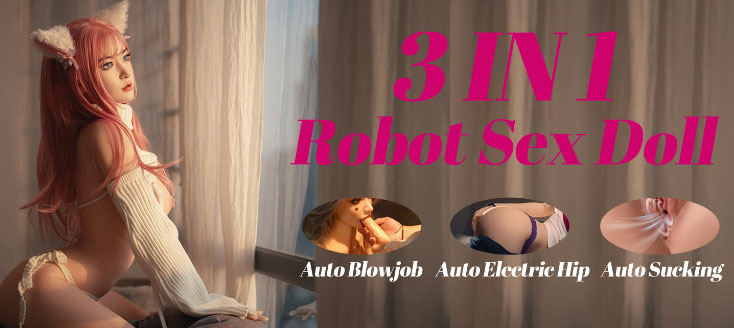How do users feel about the option to choose different body proportions, such as bust-to-waist ratios?
The ability to customize body proportions, including bust-to-waist ratios, has become increasingly important for consumers in various industries, particularly fashion, gaming, virtual reality (VR), and online retail. Here’s a detailed look at how users perceive and engage with this option across different contexts:
1. Fashion and Apparel
In the fashion world, the ability to select or customize bust-to-waist ratios is seen as a major innovation. It addresses one of the key issues of mass-produced clothing: standard sizing doesn’t fit everyone perfectly.
User Sentiments:
- Inclusivity and Body Positivity: Many consumers appreciate brands that offer customizable options, as it reflects a move toward greater inclusivity. People of all shapes and sizes can feel empowered when they have the option to choose clothing that fits their unique proportions rather than trying to fit into predetermined sizes. For instance, brands like ThirdLove and Universal Standard, which offer more size ranges or customized fits, are often praised for being inclusive.
- Improved Fit and Comfort: Customizable body proportions allow for better-fitting garments, especially for people whose body types don’t match the industry’s typical size charts. For women, in particular, bust-to-waist ratio customization is crucial. This eliminates common issues like gaping at the bust or tightness around the waist. Many users report higher satisfaction and fewer returns when customization is offered.
- Confidence Boost: People who have the option to wear clothing tailored to their body proportions often express feeling more confident. The psychological benefits of wearing something that fits well can’t be overstated; it boosts self-esteem and overall comfort.
2. Gaming and Virtual Reality (VR)
Customization in gaming and VR has become a key feature, especially with the rise of immersive experiences and avatar creation. Being able to adjust body proportions allows users to create avatars that either reflect their real-world appearance or embody aspirational or fantastical versions of themselves.
User Sentiments:
- Self-Representation: Gamers and VR users often enjoy customizing body proportions as a way to better represent themselves in virtual worlds. This customization can be especially meaningful for people with non-standard body types who may not often see themselves reflected in media or mainstream gaming.
- Escapism and Fantasy: On the flip side, some users prefer to create avatars with exaggerated proportions—like highly muscular characters or hourglass figures—as a form of escapism or fantasy. This kind of freedom is appealing in many video game genres, from role-playing games (RPGs) to life simulations like The Sims.
- Personal Expression: In VR social platforms like VRChat or Second Life, the ability to customize bust-to-waist ratios and other body proportions is often tied to self-expression. Users enjoy the freedom to explore different identities, whether grounded in reality or fantasy.
3. Online Retail and E-Commerce
In the realm of online retail, particularly for fashion and lingerie, the ability to customize body proportions is emerging as a key feature for improving user satisfaction and reducing return rates.
User Sentiments:
- Convenience and Accuracy: For users shopping online, the ability to input their exact body proportions (or choose from a variety of body types) significantly reduces the guesswork when it comes to selecting sizes. This is particularly important for lingerie, where bust-to-waist ratio is critical for fit. Shoppers often report higher satisfaction with brands that offer detailed sizing tools or customizable options, as it leads to better-fitting products.
- Reduction in Returns: For online retailers, the ability to offer customized proportions is also a way to reduce return rates. Many users express frustration when they have to return items that don’t fit correctly, and customizable sizing addresses this issue.
4. Body Image and Social Impact
The option to choose and customize body proportions, particularly bust-to-waist ratios, is not without its social implications. There’s a growing conversation about the impact of these features on body image and societal beauty standards.
User Sentiments:
- Positive Representation: Many users feel that the option to choose different body proportions fosters a more positive and realistic representation of diverse bodies, challenging the often unrealistic beauty standards propagated by media and fashion industries.
- Potential for Unrealistic Expectations: On the flip side, some users express concern that customization options, especially in virtual and gaming spaces, may perpetuate unrealistic body ideals. Overemphasized bust-to-waist ratios, for example, can reinforce harmful stereotypes and beauty standards that aren’t achievable for most people.
- Custom vs. Standard Beauty: Some users highlight the psychological tension between being able to customize a character or avatar to idealized standards and the societal pressure to conform to those standards in real life. While virtual worlds offer freedom, there’s concern about reinforcing narrow definitions of attractiveness.
5. Technological Considerations
The ability to customize body proportions often hinges on the technology available. In fashion, 3D body scanning and virtual fitting rooms have made it easier for users to see how different proportions look on their bodies.
User Sentiments:
- Appreciation for Tech-Forward Brands: Users tend to appreciate companies that invest in technologies like body scanning and virtual avatars to offer better personalization. For instance, apps that allow users to input their exact measurements and preview how clothing will fit tend to receive positive feedback.
- Learning Curve: However, some users feel that there’s a learning curve with these technologies. Those less tech-savvy or not used to body-scanning apps might feel overwhelmed by the options or confused about how to get the most accurate results.
Conclusion:
The option to choose different body proportions, particularly bust-to-waist ratios, is generally viewed positively by consumers across fashion, gaming, and virtual reality spaces. It offers a level of personalization that many users appreciate, helping them feel more represented and confident. However, concerns remain about the broader social implications of these customizable features, especially when they intersect with societal beauty standards and body image issues. Users often welcome this flexibility, but they also express a desire for greater inclusivity and realism in how body proportions are represented across industries.

